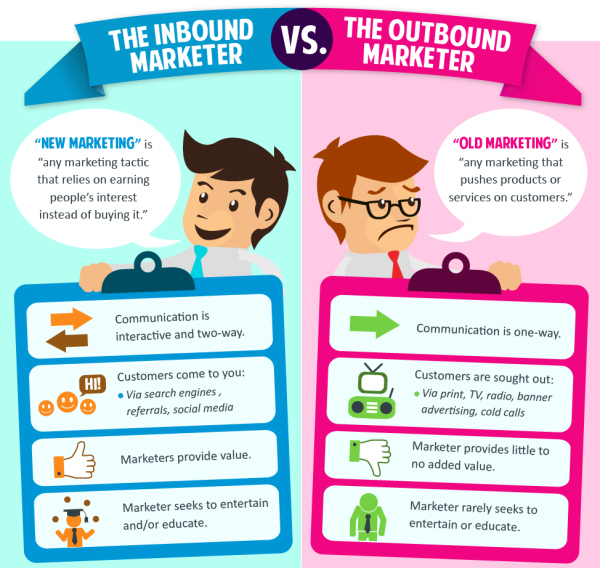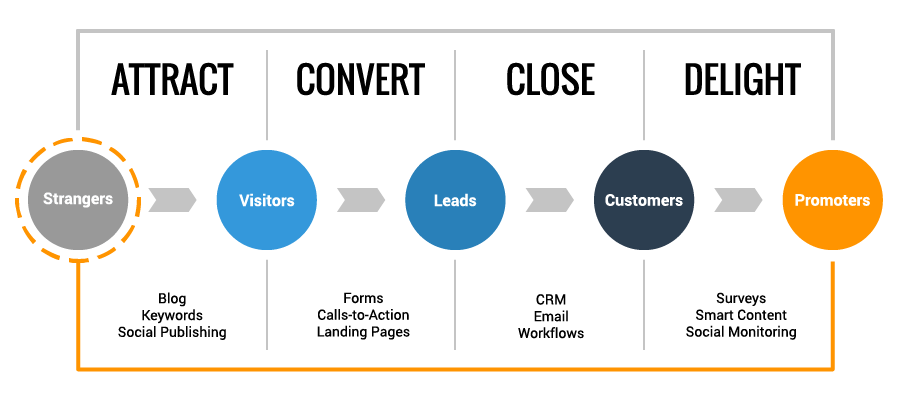Digital Marketing Vs. Inbound Marketing Vs. Growth Hacking

Digital Marketing Vs. Inbound Marketing Vs. Growth Hacking
The terms Digital Marketing, Inbound Marketing, and Growth Hacking are not fancy buzzwords! Getting to know how a successful marketing strategy works wonders. This also needs cognizance that is well evident from successful businesses.
When you say Digital Marketing, SEO or Social Media Marketing is not the one-pill solution for all your business illnesses! Identifying the right audience and building an online presence for your business is necessary. This is either performed by reaching out to the crowd or getting them to reach out to you. So creating a space for your business in the right online space at the right time targeting the right set of the populace is your path to the triumph.
Traditional Digital Marketing
Traditional Digital Marketing is push marketing or it’s also called outbound marketing. This strategy tries to generate leads by compelling information to the audience like TV Ads. Modes involve SMS, E-mail blasts, digital brochures, micro-sites, electronic billboards, RSS, and more that target the customer with a customized message. This form of marketing lets you find your customers instead they find you. This is a better way to raise awareness. If you have much money, it will help in an immediate building of your brand to a wide range of less targeted customers.
The pitfalls of traditional digital marketing are:
- Not much targeted
- Communication is one-way
- Companies Seek out for clients
- Content is strictly sales-related
- Unsure about the right audience reach
- Quite Expensive

Digital Inbound Marketing
Inbound Marketing is a form of pull-marketing! It aims to encourage and entertain customers. In other words, Inbound Marketing is a series of activities that let to bring customers in rather than you reaching out to them through cold emails or un-targeted ads. This comes to you with effective content marketing strategies. For example, using websites, blogs, social media, and more. To increase your sale and the quality of lead on the market, Inbound marketing would be the result-driven one. Inbound marketing builds up by itself and produces many immediate and long-term benefits.
All the way from the company launch, Inbound marketing continues to resource new clients and maintain the existing ones. Specific visitors are targeted by providing respective valuable content. This further builds trust. Thus in short sales time, you achieve more qualified leads.
Companies that leverage effective content marketing have more opportunities. According to Hubspot statistics, B2B companies that do content marketing 67% more leads per month than those who do not. Thus content in inbound marketing plays its role way quickly.

Surveys show a 57% increase in marketer adoption of inbound marketing strategy. This resulted in 54% more leads and marketing Cost Per Lead is 60% lower as compared to outbound marketing methods!

Benefits of Inbound Marketing
- This technique is targeted
- Two-way communication
- It provides value to customers
- Impactful services
- Drives qualified leads
- Ongoing content creation helps in fueling the SEO
- Increases brand awareness

Inbound Marketing generates sales qualified leads for less money as that compared to traditional marketing or outbound marketing strategies.
Inbound Marketing Methodology
Inbound Marketing has become the major marketing technique for online business development. The method involves the following:
Attract
Inbound marketing attracts strategies via blogs, social media, keywords and pages. The output of this method is that it turns strangers on the media to visitors to the business.
Convert
The second phase involves converting visitors into leads. This is a call-to-action and is possible via landing pages, forms, and contacts.
Close
The leads generated need closure so that the business gets valuable customers. This takes place via email, workflows, lead scoring, and CRM integration.
Delight
The customers then turn into promoters for your business. This takes place via social media, smart ways of calls-to-action, email, and workflows.

Hubspot’s State of Inbound 2017: Inbound marketing efforts are 62% less expensive. It also states that 71% of B2B and B2C companies are globally reported to be focused on inbound marketing!
Growth Hacking
The phrase “Growth Hacker” was coined by Sean Ellis in the year 2010. Growth hacking is a new online marketing tactic. This approach uses a low-cost strategy to fuel a company’s lead generation. It is a procedure of rapid tests across market channels. Product development and sales segments are identified for effective means of business growth.
The main difference between inbound marketing and growth hacking is to be identified. A growth hacker would try anything and everything possible for generating leads. This generates traffic but it demands constant iteration. Growth hacking is a short-term strategy that can be employed as needed, maybe during a startup.
It involves temporary work and has a narrowed focus on business growth. For now, the term Growth Hacking is owned by startups. But study reports show that growth hacking will in future be a part of the Fortune 500 companies!
Growth hacking methodologies
- Awareness- Getting people to visit your website
- Acquisition- Getting them to sign up
- Activation- Users get a great user experience
- Revenue- Sell
- Retention- Getting users to come back
- Referral- Getting customers to promote us
Pitfalls and shortcomings of Growth Hacking
Growth hacking depends on your ability to scale up your marketing to generate results.
The pitfalls of growth hacking are:
It does not have a universal approach. Growth hacking is thus not considered suitable for varying business types.
A growth hacker must own many skills. This includes marketing, analytics and technology, and also creativity. If these ideas go on a toss, they fail.
Blunders with Growth Hacking
Blind technique trials
One of the major blunders a B2B startup can make is trying and testing a technique without considering its suitability for the product.
Not understanding customer behavior
A B2B startup can fail miserably if they do not collect the required information on consumer demand, customer feedback and reviews.
Not paying attention to risk management
If a risk management plan is not a part of the core business strategy, the company can fail at risk.
Ignoring the costs
Ignoring costs or making miscalculations impact business growth. It is important to keep a check on CPA(Cost Per Acquisition) with the strategy. Most companies that involve growth hacking techniques often forget the focus on this area.
Hyper-growth of companies with Inbound marketing over Growth Hacking
For businesses that seek growth, inbound marketing has more than double the search volume than that of growth hacking. Inbound marketing is designed to promote organic growth. It is done by using educational content, effective social media management, email marketing, fruitful campaign management, surveys, social monitoring, etc. Moreover, Lead Nurturing an integrated search strategy is a proven ongoing conversion optimization technique to drive more leads.
But growth hacking is not designed for long-term success. It is best suited for small/ medium-sized companies. A limited marketing budget is selected and repetitive and data-driven tasks are applied.
In a nutshell, if you look at the growth spectrum, growth hacking is a sprint in business when you want to take a rapid jumpstart. And inbound marketing is a marathon!
Image Courtesy
Hubspot, Voltier Digital, Squaredot, Square2marketing, and Inboundmantra.


